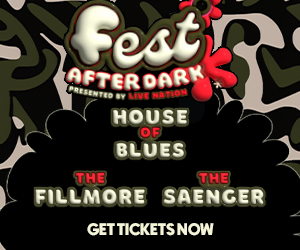 |
John Lee Hooker played the Riverboat President back in the late 1980s on a dream bill organized by the Fabulous Thunderbirds. The boat was packed stem to stern with buzzing, excited drinkers who were making quite a racket when Hooker took the stage accompanied only by his electric guitar. He began playing a low, droning shuffle and singing in a half-whispering, half-moaning voice and the place became dead silent. He had cast a spell over this boatload of music lovers riding on the Mississippi River, spinning the storyteller’s magic. This is the John Lee Hooker that comes across on Hooker, Hooker the storyteller, holding you with the dramatic power of a line… then waiting, waiting, his discursive guitar playing building the tension until the next line falls on you, crushing you with its weight. “My mama didn’t ’low me,” he sings at the outset of the mythopoeic “Boogie Chillen,” “to stay out all night long.” These few words describe an entire sociology, and by the time, later in the song, Hooker famously hears papa tell mama “it’s in him and it’s got to come out,” the moment holds a fierce, dramatic power. Far from the cliché “boogie chillen” later became, the phrase here is a call to arms, a jail door thrown open, letters of transit from Casablanca, you name it. Hooker rode his boogie, a clever distillation of the African griot’s lute accompaniment to his stories, through a roller coaster of a career that ended with the biggest selling records of his life.
Hooker does serious justice to that career, concentrating on that masterful storytelling, usually accompanied only by that single, rattling guitar on the first of the four discs. The earliest tracks cover his Bernie Bessman-produced 1948 through 1950 sides for Modern Records, including such touchstones as “Sally Mae,” “Crawlin’ King Snake” and “John L’s House Rent Boogie.” It also includes privately recorded adaptations of traditional material, including a dramatic rendition of “Moses Smote the Water” that varied dramatically in style from his commercial recordings; and several tracks recorded under the pseudonyms Texas Slim, Johnny Williams and John Lee Booker. Bessman probably didn’t deserve the co-writing credits he assumed on the Modern sides, but one of the things Hooker proves is that Bessman’ s production was crucial to the sonic identity of Hooker’s early hits. Modern put him in duo and group setting with various piano players and guitarists through the mid-’50s, but the other players messed up Hooker’s flow with the notable exception of Eddie Kirkland, who collaborated brilliantly with Hooker on the No. 1 1951 R&B hit “I’m in the Mood” and on the bone-chilling “Down Child.”
Though he wasn’t selling records during the 1970s, Hooker was at the height of his influence. In England, bands like Ten Years After and Savoy Brown patterned their sound after Hooker’s monochord shuffle and the same thing was going on in the States, where Canned Heat rode refried boogie to headlining status and every proto-southern rock outfit boogied in 30-minute marathons. Although many of Hooker’s musical children overstated his message, when they accompanied him they were more effective than some of his contemporaries were at supporting his style. Canned Heat in particular provided great accompaniment on Hooker ’N Heat, represented here by three tracks.
Hooker enjoyed a popular resurgence toward the end of his life under the careful handling of producer, band member and guitarist Roy Rogers. 1989’s The Healer put Hooker together with then-younger blues performers including Carlos Santana, Van Morrison, Bonnie Raitt, Ry Cooder and Robert Cray. The recordings featured Hooker’s strengths as a vocalist, but they were less about him than the accompanists, especially the Santana tracks. The best match here was with Morrison, who shares Hooker’s sense of brooding doom and his capacity for quiet dynamics on the extraordinary “Don’t Look Back.”




